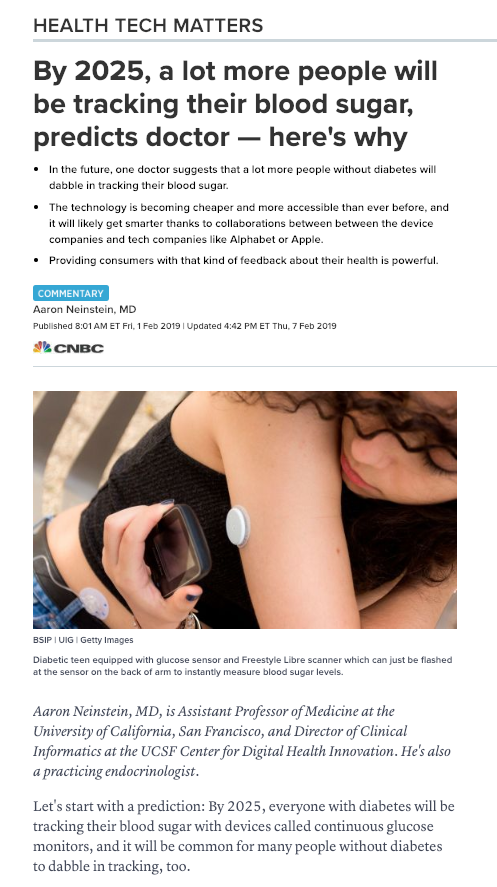I recently published a Commentary on CNBC about the future of glucose tracking using continuous glucose monitors. Here is the link – http://bit.ly/CNBCcgm – and here is the Twitter thread that I wrote with further thoughts.
In my editorial on #cgm use, I cite this fantastic article on ‘glucotypes’ from @StanfordMed geneticists & endocrinologists (http://bit.ly/plosgluco ). One of my favorite #diabetes papers from 2018. I want to explain a bit more why I think this paper is so important.
First, here is the editorial in @CNBC – http://bit.ly/CNBCcgm – on where I see #cgm use going in next few years in management of diabetes and increasingly in use for people not diagnosed with diabetes.
How we define ‘diabetes’ and make a diagnosis has changed dramatically over the decades. See a short presentation I gave on this in 2012 here – http://bit.ly/DMdiag . We’ve progressed from urine testing to OGTT to fasting glucose to A1c.
The @StanfordMed paper from Hall et al demonstrates that our current diagnostic tests are probably insufficient. They’re missing lots of people, now labeled as ‘normal,’ who #CGM shows actually have dysregulated insulin responses to glucose consumption.
Do these people have diabetes? Prediabetes? These categories were historically defined based on what we know about A1c correlating to risk of microvascular complications (ie retinopathy). That is, it is ‘worth’ diagnosing someone with diabetes if A1c correlates w increased risk.
Really, what we mean is, would the benefits of treatment for diabetes outweigh the harms of treatment for a person with a certain degree of risk based on their A1c?
But… A1c is just an average, fraught with issues. What really matters is, is a person metabolically healthy and are they at increased risk for heart disease or microvascular complications down the road? So, there is a long road ahead for future research here.
How do we categorize ppl based on insulin-glucose response seen with #cgm? Are people with abnormal ‘glucotypes’ at higher risk for heart disease & microvascular complications? What are long-term outcomes? Will they change behavior & improve outcomes when faced w CGM data?
So, to summarize: Not only is #cgm a necessary tool for all with #T1D, & massively valuable for most with type 2 diabetes, but I believe its use will help us redefine what we think of as #diabetes, how we define a continuum of risk and categorize individual physiologic responses.

Is CGM the Fitbit of the future? Interesting stuff!
LikeLike